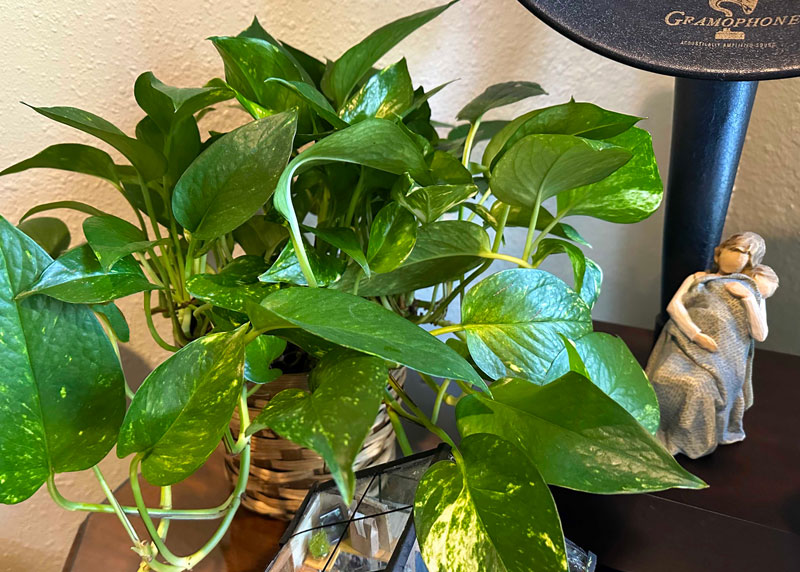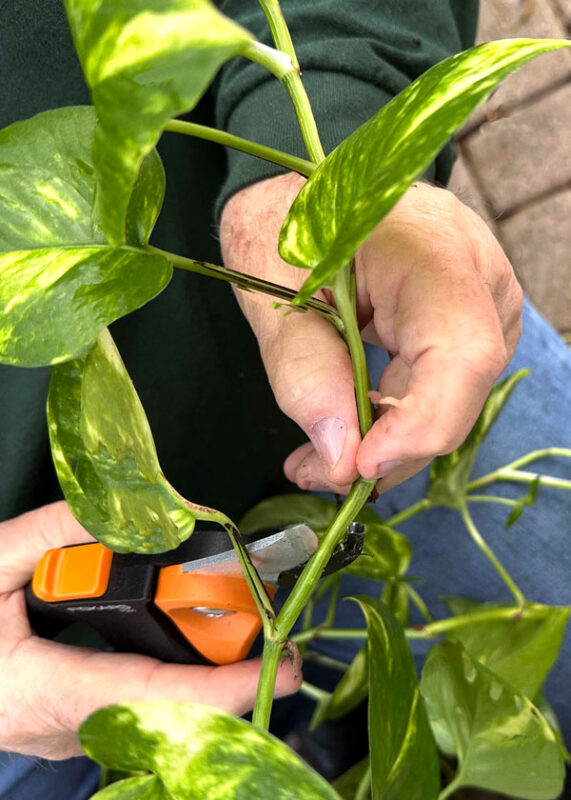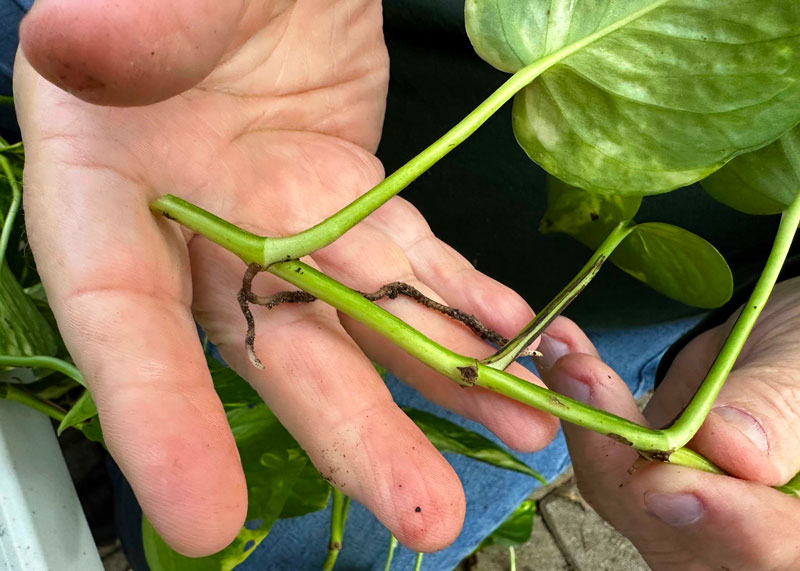A hobby for the obsessive
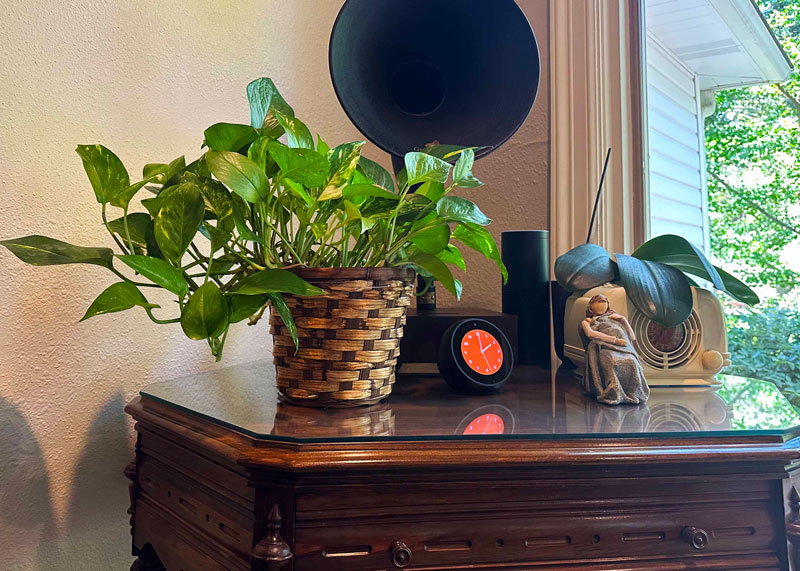
My wife came home from Christmas school board dinners two years in a row – 5 and 6 years ago – with lovely wicker basket 6-in. pots of devil’s ivy as centerpiece gifts. We put them on tables in our sunroom and grew them for a couple of years, pretty much without feeding, just enjoying them.
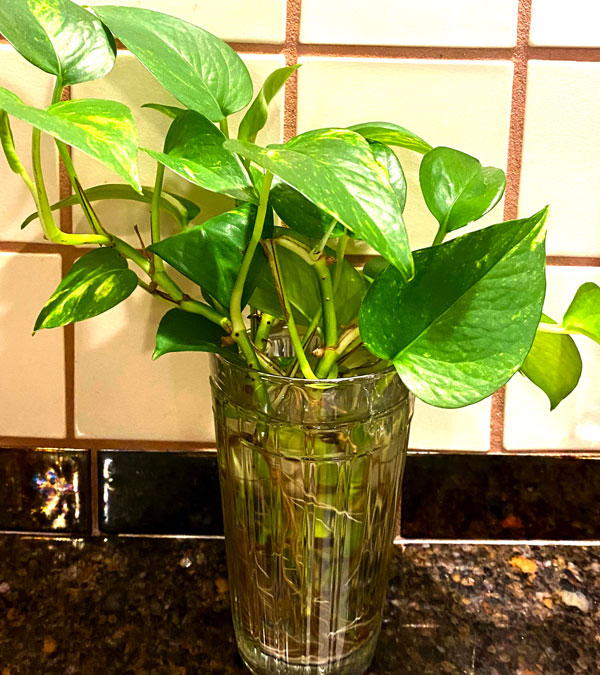
Eventually both plants began to get a bit leggy so I trimmed them and stuck the cuttings into a glass of water so they could form roots. I think I had 8 or 10 cuttings. I fertilized the plants and freshened up their potting soil and put them right back into the same wicker baskets.
Both plants started to grow. And grow. Their leaves got larger, and their stems got thicker. I had to harvest more stems every 6 or 8 months. I kept feeding them, and I’ve added fresh soil a couple more times.
The two plants are still in our sunroom and they’re still just as pretty. They’ve been trimmed for cuttings now 4 times.
Each of those cuttings was rooted, then potted 5 or 6 per 6-in. pot just like their mamas were and grown in my greenhouse. That was until this summer. We brought around 125 pots over to the house and set them into some empty color beds where they’ve been growing for the past 5 months. Another 125 pots have been doing the same over in the greenhouse across the creek.
Now I have about 250 6-in. pots filling a very large bench, and those plants look fabulous. They need a couple of months to fill back in since we harvested more cuttings this week.
Those cuttings were stuck directly into freshly filled 6-in. pots just like their mamas, so now we’re into our 5th generation of devil’s ivies from those original two plants, and our tally is running up toward 400 plants.
Here are some photos taken along the way in the process.
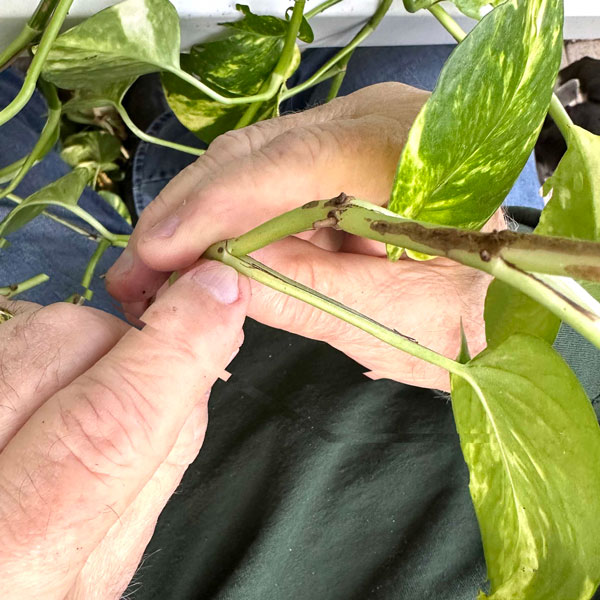
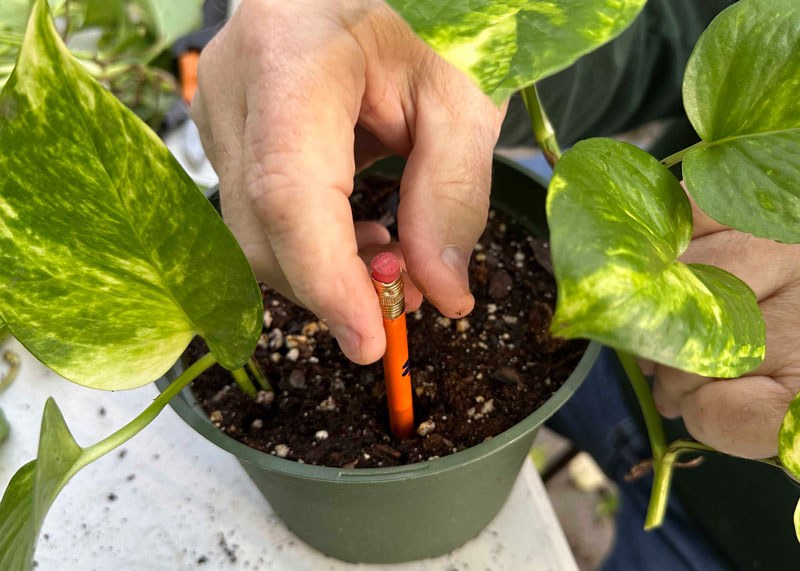
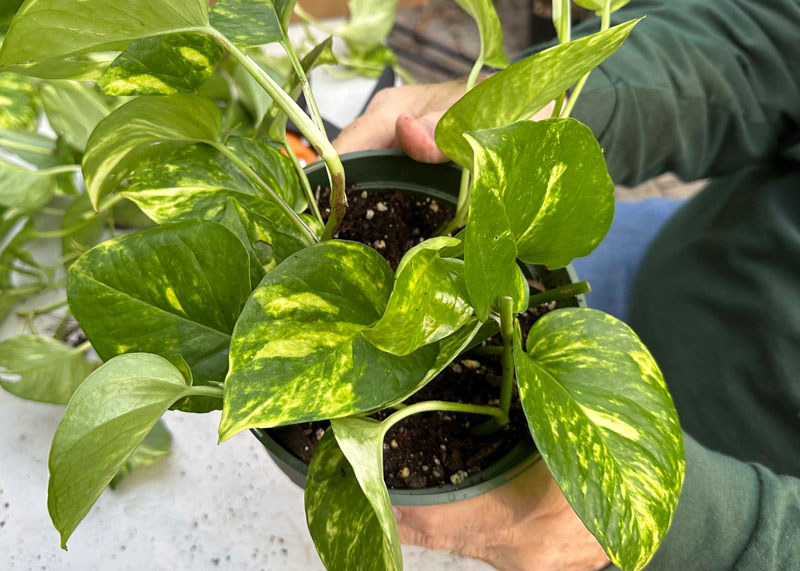
A few details…
• Common names: Devil’s ivy, pothos plus several cultivar names like ‘Marble Queen,’ ‘Neon,’ and ‘Golden Pothos’
• Scientific name of species: Epipremnum aureum
• Native home: Society Islands of French Polynesia of South Pacific
• Growth form: Vining plant that is used as a trailing potted or hanging basket plant. When trained to grow vertically its mature leaves become larger and larger, eventually to 18 or 20 inches across.
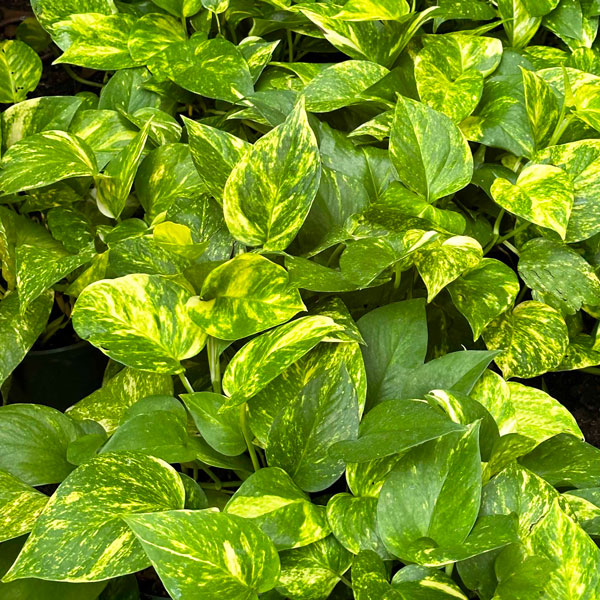
• Light requirements: Bright indirect sunlight is best. Intolerant of Texas sun in summer. Leaves are less colorful in heavy shade or dark rooms.
• Temperature range: Intolerant of freezes, so protect from temperatures below 50F. Keep moist at all times if grown outside in summer.

